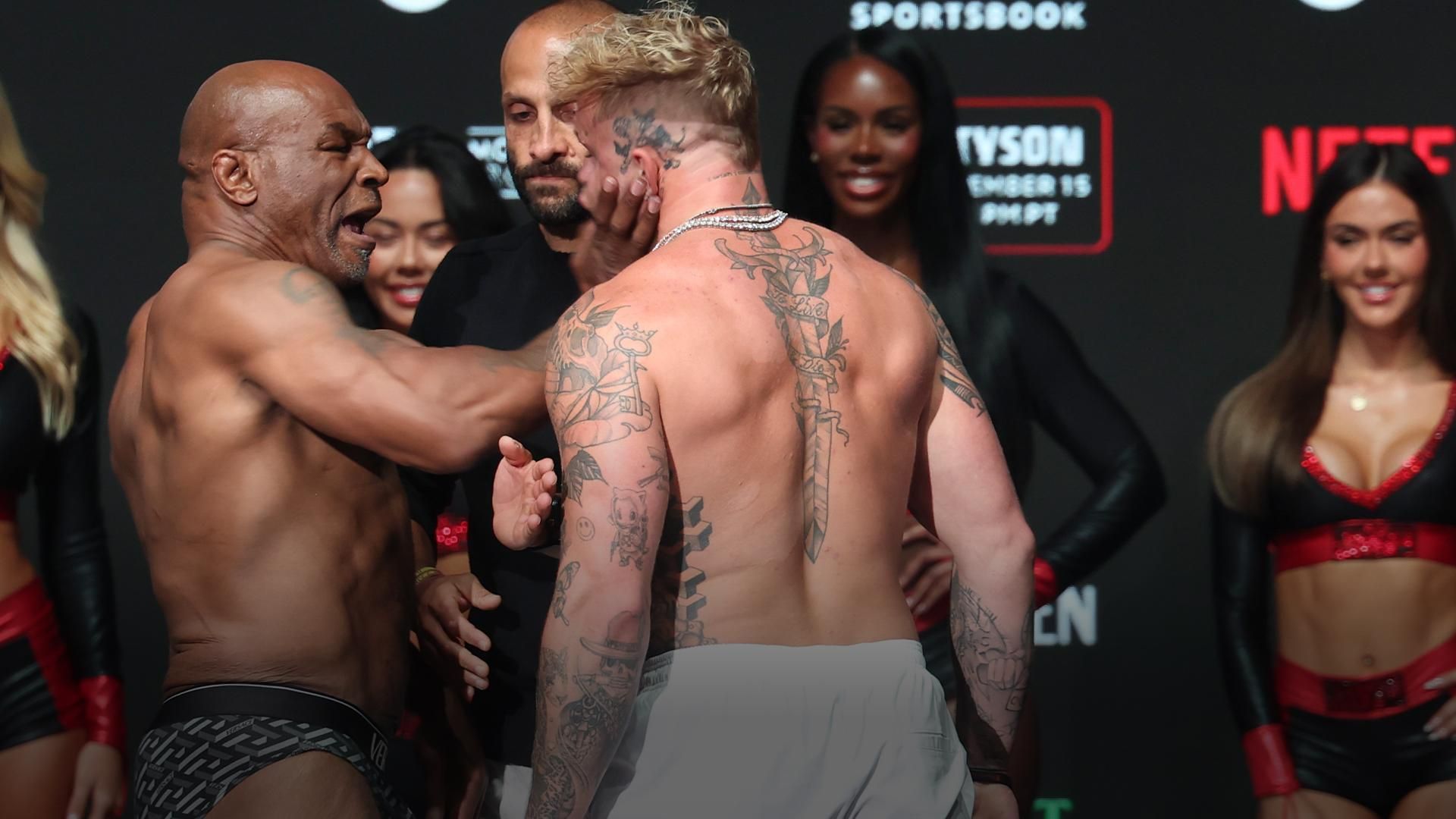
It’s strange to think of a brewing crisis before Halloween, but the Montreal Canadiens were there on Saturday morning. Three days since a 7-2 pasting at the hands of the New York Rangers were filled with constant analysis and picking apart and doubt all over the city. That applied to the players, to management, and yes, to the coach.
Advertisement For the first time since he arrived, Martin St. Louis was being openly doubted in Montreal. He figured it out Thursday morning as he was walking to the Bell Centre to get some work done while his players rested when a couple of fans stopped him and told him not to listen to all the critics, to keep going.
“So I realize, OK, this is happening,” he said with a laugh Friday after practice. It was indeed happening, which made the weekend oddly crucial. But more than the back-to-back games against the St.
Louis Blues and Philadelphia Flyers , it made what St. Louis did at practice Wednesday, on that off day Thursday and at practice Friday so crucial. That entire time was spent working on the Canadiens’ defensive zone play, and it was strikingly similar to a period in November last season where the Canadiens spent two straight practices working exclusively on their forecheck after a similarly demoralizing loss to the Bruins in Boston.
The Canadiens won their next two games after that forecheck boot camp last season, and now they’ve won their next two games after the defensive zone boot camp this season. So, what did St. Louis learn from last year’s boot camp that helped him this time? “You can’t fix five things at once,” he said Saturday morning.
“So to me, what I learned from last year is if you’re direct, precise on one topic, there’s instant improvement. Is it perfect? No, but there’s instant improvement. “So I’m very confident — and I believe in this group — that we’re going to be better tonight in that department.
Am I expecting perfection? No. But I’m expecting improvement, and I know we have the guys for that.” The Canadiens had back-to-back days of improvement on the weekend — notwithstanding the final five minutes of the game in Philadelphia on Sunday — and St.
Louis was proven right, for now. Advertisement Of course, not everything is fixed, and in an ideal world the deep problems wouldn’t appear to begin with, but this is a good trait to have for a young group, to be able to attack a problem and address it in a relatively short period of time. Diversifying the power play We often have the instinct to note who plays where on the power play and send it out to the world, triggering outrage.
But one of the defining characteristics of the Canadiens’ top power-play unit is how the positions change. Aside from having Mike Matheson up top, the four forwards will often switch positions from one power play to the next, and even within the same power play. The hope is to create confusion for the penalty kill.
For instance, every team facing the Canadiens will be focused on taking away Cole Caufield ’s one-timer from the left circle. So when he’s suddenly on the right circle, it forces the penalty kill to adjust, which can create hesitation and, ultimately, space. “Interchanging is a good part of creating space,” Caufield said Saturday morning, “but all three of us can play in those different positions.
” Though Caufield, who has played in the left circle basically his entire hockey-playing life, doesn’t necessarily love it when he winds up in that right-circle spot. “I feel it’s more of a playmaking side, but if they give you a lane you can shoot,” he said. “It’s all about coming with the right pace and staying below their F1 .
It’s all about making reads, but as much as we can get Suzy ( Nick Suzuki ) over there, I think that’s the best look we’ve got.” And that’s the other point of switching guys around. When you get the ideal look with Suzuki in the right circle and Caufield in the left and Kirby Dach in the bumper, you’ve destabilized the opposing penalty kill enough so that primary look gets more space.
Advertisement The Canadiens scored their eighth power-play goal in nine games this season against the Flyers when Caufield squeezed a shot through Aleksei Kolosov from ...
the left circle. “It’s less predictable for the other team, but their movement is predictable for us, they know what they’re doing,” St. Louis said.
“As a team, whether it’s five-on-five or five-on-four, that’s what you want to be. You want to be unpredictable for the other team but predictable for your group so the guys know what to anticipate, where to look first.” The changes have been noticeable from last season’s forgettable power play regarding where shots come from.
Here, courtesy of HockeyViz , is the Canadiens’ heat map on the power play last season: And here it is in the small sample of this season: Two things immediately jump out. First off, the Canadiens have mercifully abandoned the shot from the point this season, and that is definitely by design. A far greater effort is being made to get the puck into more dangerous areas to shoot it.
Second, they are shooting far less frequently from Caufield’s office in the left circle and spreading the wealth a bit, probably because Caufield isn’t there as often as he was last season. But also, Caufield, generally, isn’t shooting nearly as much as he did last season. He did have 10 shot attempts Sunday night, a season high for him.
But he is still letting go of a shot far less frequently than he ever has. In each of the last two seasons, Caufield attempted 21.25 shots per 60 minutes of ice time in all situations, according to Natural Stat Trick .
So far this season, he’s at 16.83 per 60, and yet he’s scoring at nearly a goal-a-game pace. The 7-11 line? A buddy of mine came up with a name for the line of Josh Anderson , Jake Evans and Brendan Gallagher , which has clearly become the Canadiens’ identity line.
They start most periods, they play a direct, simple forechecking game and they have been the most consistent line this season. Because the line’s numbers, 17, 71 and 11, only use sevens and ones, he suggested the 7-11 line. And I like it.
Advertisement For one, a 7-Eleven is always open and gives you what you need whenever you need it, just like this line has done for the Canadiens. But secondly, buying some basic goods at a 7-Eleven is also generally more expensive than it would be at a grocery store, and with Anderson and Gallagher combining for $12 million on the Canadiens’ cap in a third-line role, that kind of fits too. For Anderson, embracing this role has been a key to his ability to forget how last season went.
He had a conversation with St. Louis about it early in training camp, just to make sure he would be OK with less of an offensive role, and he was on board even before that conversation took place. “Oh yeah, we talked about that,” Anderson said.
“But I kind of had that idea going into the year anyway of a specific role I would have to get back to.” That is a north-south role; someone who plays direct hockey, who is physical on the forecheck and doesn’t worry too much about skilling it up. Playing with Evans and Gallagher has made embracing that role easier for Anderson.
But really, this is a return to what he has always been about, it’s simplified his game and it’s made him more effective. “Yeah that’s fair,” he said. “I think creating more of an identity, I think it helps playing with Jakey and Gally, getting on the forecheck as much as we can, creating an identity for our team.
Especially at times when things are not going well, he sends our line over the boards to try to create that energy for our team when we need it and trying to be consistent with that. “I think we’ve done a good job of being reliable in our own end and getting pucks deep and trying to create scrums in front of the net and rebounds and stuff like that. We’ve just got to continue that.
” The 7-11 line. Always there when you need it. Let’s make it a thing.
The Suzuki connections to the Blues With the Blues coming through town, there were two unique connections to Suzuki who could speak to what he’s become: captain of an Original Six team and a crucial part of the Canadiens’ rebuild. The first is Blues assistant coach Claude Julien, Suzuki’s first NHL coach who integrated him into the league at a young age. And he saw then what we see now, an emerging leader and impact player.
Advertisement “A smart player,” Julien said Saturday morning. “I’m not going to say he’s a rah-rah leader, but he’s a leader who I think the players in that room respect a lot. He’s well-spoken, he’s intelligent, not just on the ice but off the ice, and I think he’s an example and a captain for this organization.
“But his hockey smarts were so good, all we could think of was as he gets more and more experience, the impact he’s going to have. And that’s exactly what’s happened. When you talk about cerebral players, I think he’s one of those guys, and he sees the game really, really well.
I had him in his first year, and I predicted he would become what he is today. He is an impact player for this hockey club.” Julien coached Patrice Bergeron at a young age in Boston.
He didn’t shy away from bringing up that name. The other connection is Blues forward Jordan Kyrou , who grew close to Suzuki when his family moved to London, Ont. when he was a teenager.
They began training together in the gym and on the ice in the summer and built a friendly rivalry. Kyrou provided a window into Suzuki’s competitiveness, relating that in past meetings he would try to strike a conversation during the game and Suzuki would not only not engage, but would even give him a little slash after the whistle to make it clear the relationship between the two would have to wait until after the game. “Tonight I’m going to try to give it back to him,” Kyrou said with a laugh.
“I’m not talking to him.” Kyrou faced Suzuki often in the OHL and, like Julien, saw what Suzuki would eventually become even back then. “He was always a leader in that sort of sense, you can just get that energy from him.
I kind of could tell that he’d be a captain. He’s just always had that energy,” Kyrou said. “Just his work ethic on the ice, off the ice, his compete.
He’s always wanted to win, always wanted to get better. He leads by example. Advertisement “It’s obviously hard to say when you’re younger, it takes time sometimes to get into the league, and he got into the league pretty quick.
He’s showing what he can do right now. I’ve always thought of him really highly.” (Top photo of Canadiens celebrating a goal in Philadelphia: Mitchell Leff / Getty Images).














